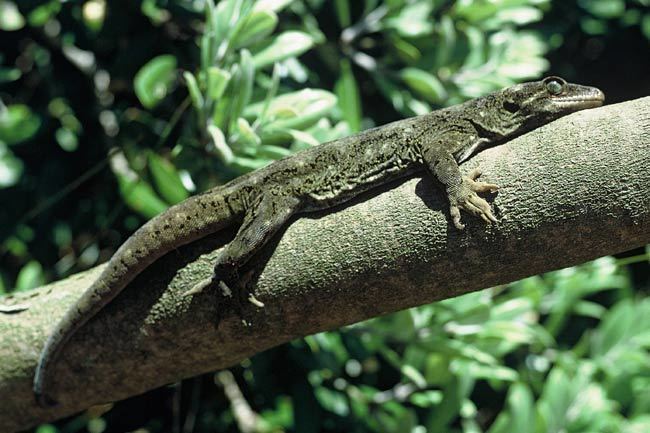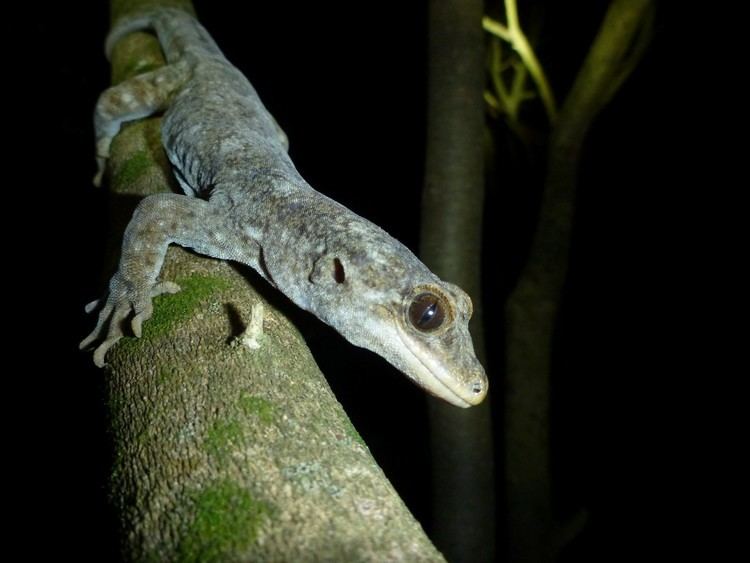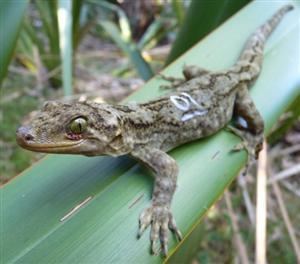Suborder Sauria/Lacertilia Family Gekkonidae Higher classification Hoplodactylus Order Scaled reptiles | Subphylum Vertebrata Infraorder Gekkota Subfamily Diplodactylinae Phylum Chordata Rank Species | |
 | ||
Similar Hoplodactylus, Reptile, Woodworthia maculatus, Hoplodactylus pacificus, Oligosoma | ||
Duvaucel s gecko
Duvaucel's gecko, Hoplodactylus duvaucelii, is a gecko found on predator-free offshore islands of New Zealand, including Great Barrier Island and a number of Cook Strait islands. A dead gecko was also found at Maungatautari in March 2010, probably indicating that it is not extinct from mainland New Zealand. Its total length is up to 300 mm (snout to vent up to 160 mm) weighing up to 120 grams, making it the largest living gecko in New Zealand. The oldest known wild Duvaucel's gecko was aged at least 36 years.
Contents

Duvaucel's gecko is a heavy bodied animal with a relatively large head, and long toes with expanded pads. Its colouration is mainly grey, often with a faint olive-green hue. Usually there are 6 irregular blotches lying across the body from side to side between the back of the head and the base of the tail which is never striped. It is nocturnal but sometimes sun basks. It eats relatively large prey, such as puriri moths, and weta.

Fossil evidence suggests that they were once much more widespread, but predation by introduced mammals has ensured its range is now much reduced. These geckos both forage on the ground and are arboreal, living in scrub and forest, and along the shore line of the islands to which they are presently confined.

The species was erroneously named after Alfred Duvaucel, a French naturalist who explored India. The museum specimens taken to Europe were credited to him, and only later were the animals found to have come from New Zealand.

Duvaucel's gecko were reintroduced to the mainland of New Zealand at the end of 2016 when 80 animals were released in the Tāwharanui Open Sanctuary on the Tawharanui Peninsula.

